Farmed vs. Wild Oysters: What’s the Difference?
Answer:
“Farmed” and “wild” oysters differ in how they begin and where they grow. Wild oysters are naturally set in the bay, while farmed oysters often come from hatchery seed. At Willapa Wild, we work with both — harvesting wild oysters from natural hummocks, then often finishing them in baskets or on beds to create beautiful, market-ready oysters with wild genetics and refined presentation.
🐚 Wild Oysters: Nature’s Originals
Wild oysters are spawned and set naturally in the estuary — no hatcheries involved. In Willapa Bay, they often cluster in dense “hummocks” on the bottom, forming large, irregular shapes.
🔹 Pros:
- Wild genetics and deep local flavor
- Resilient and adapted to their environment
- Zero human intervention at the early stage
🔹 Challenges:
- Grow in clusters; must be separated (culled)
- Irregular shapes, often not ideal for raw bars
- Slower growth and inconsistent yield
🧺 What We Do With Wild Oysters
At Willapa Wild, we harvest wild oysters, then:
- Cull them — separating clusters into individual oysters
- Replant the smalls into flip bags, beach bags, or onto bottom beds
- Finish them into a product that balances natural origin with commercial readiness
This creates a hybrid value: a wild oyster, shaped and polished for the plate.
🧬 Hatchery Seed: Controlled Start, Natural Finish
Farmed oysters typically begin in hatcheries, where broodstock are selected for traits like fast growth and shell strength. Once the seed is ready, it’s planted in baskets, bags, or directly onto the bay floor to grow.
🔹 Pros:
- Consistent growth and sizing
- Disease-resistant lines
- Faster time to market
🔹 Challenges:
- Lacks the full terroir of wild-set genetics
- Seen by some chefs as “too perfect”
🔄 The Willapa Wild Approach: Both Worlds, One Philosophy
We work with both wild and hatchery oysters — but everything we grow is:
- Tumbled by tide
- Raised without dredging
- Finished to match the needs of chefs and consumers
Whether it starts in a hatchery or sets naturally on a hummock, our goal is the same: an oyster that reflects the wild beauty and integrity of Willapa Bay.
📊 Summary Table
|
Feature |
Wild Oysters |
Farmed (Hatchery Seed) |
|
Origin |
Naturally spawned in the bay |
Bred from selected broodstock |
|
Early life |
Clusters on hummocks, no human input |
Raised in nurseries |
|
Uniformity |
Irregular, unpredictable |
Highly consistent |
|
Intervention |
Harvested, culled, re-finished |
Managed from seed to sale |
|
Final product at WW |
Refined but retains wild character |
Shaped and finished for quality |
💡 Why This Matters to You
Understanding where oysters come from — and how they’re handled — gives you a clearer sense of what you’re tasting. At Willapa Wild, we preserve what’s natural and shape what’s needed, delivering oysters with both story and structure.
